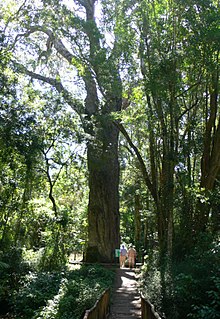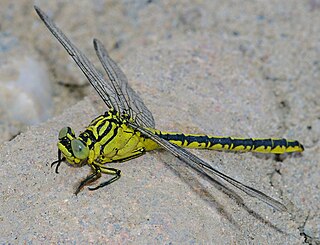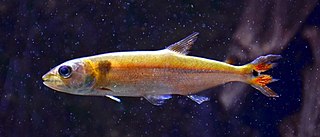
Pompanos are marine fishes in the genus Trachinotus in the family Carangidae. Pompano may also refer to various other, similarly shaped members of the Carangidae, or the order Perciformes. Their appearance is of deep-bodied fishes, exhibiting strong lateral compression, with a rounded face and pronounced curve to the anterior portion of their dorsal profile. Their ventral profile is noticeably less curved by comparison, while their anterior profile is straight-edged, tapering sharply to a narrow caudal peduncle. Their dorsal and anal fins are typically sickle-shaped, with very long anterior rays and a succession of much shorter rays behind, with a similarly long & curved, deeply forked tail which has a narrow base. They are typically overall silvery in color, sometimes with dark or yellowish fins, and one or a few black markings on the side of their body. They are toothless and are relatively large fish, up to about 1.2 m (3.9 ft) long, although most species reach no more than half or two-thirds of that size. They are found worldwide in warmer seas, sometimes also entering brackish waters.

Afrocarpus falcatus is a species of tree in the family Podocarpaceae. It is native to the montane forests of southern Africa, where it is distributed in Malawi, Mozambique, South Africa, and Eswatini. Common names include common yellowwood, bastard yellowwood, outeniqua yellowwood, African pine tree, weeping yew, Afrikaans: outeniekwageelhout, kalander, Sotho: mogôbagôba, Xhosa: umkhoba and Zulu: umsonti. It is widespread, in some areas abundant, and not considered threatened, but it is a protected tree in South Africa. It is grown as an ornamental tree, especially in South Africa, and occasionally abroad.

Afrocarpus gracilior is a species of coniferous tree in the family Podocarpaceae known as benet in Marakwet and East African yellowwood, African fern tree, or bastard yellowwood in English

The permit is a game fish of the western Atlantic Ocean belonging to the family Carangidae. Adults feed on crabs, shrimp, and smaller fish.

The lazuline sabrewing is a species of hummingbird in the "emeralds", tribe Trochilini of subfamily Trochilinae. It is found in Colombia, Ecuador, and Venezuela.

The Cuban fig-eating bat, or white-shouldered bat, is a species of bat in the family Phyllostomidae, found only in the Caribbean. It is the sole extant species in the genus Phyllops, although two other species, P. vetus and P. silvai, are known from fossils.

Doratogonus is a genus of millipedes in family Spirostreptidae. They are relatively large, at 80–200 millimetres (3–8 in) long, relatively common, and distributed across Southern Africa. Many of the species are listed on the IUCN Red List due to habitat destruction.

Stylurus is a genus of dragonflies in the family Gomphidae. They are commonly known as Hanging Clubtails from their habit of hanging nearly vertically when they perch.
Tropodiaptomus is a genus of copepods in the family Diaptomidae. It includes the following species, many of which are narrow endemics and are included on the IUCN Red List :
Tropodiaptomus falcatus is a species of calanoid copepod in the family Diaptomidae.
Chlorozancla is a genus of moths in the family Geometridae. It contains a single species, Chlorozancla falcatus, which was described in 1895.

Sarcochilus falcatus, commonly known as the orange blossom orchid, is a small epiphytic or lithophytic orchid that is endemic to eastern Australia. It has up to eight, leathery leaves with fine teeth on the edges and up to twelve white to cream-coloured flowers with a white labellum that has orange and purple markings.
Synodus falcatus is a species of lizardfish that lives mainly in the eastern central Pacific Ocean.

Leopard dace is a species of ray-finned fish in the genus Rhinichthys. It is found in the United States and Canada, where it inhabits the Fraser and Columbia river drainages in British Columbia, Oregon, Washington, and Idaho.

The World's 25 Most Endangered Primates is a list of highly endangered primate species selected and published by the International Union for Conservation of Nature (IUCN) Species Survival Commission (SSC) Primate Specialist Group (PSG), the International Primatological Society (IPS), Global Wildlife Conservation (GWC), and Bristol Zoological Society (BZS). The IUCN/SSC PSG worked with Conservation International (CI) to start the list in 2000, but in 2002, during the 19th Congress of the International Primatological Society, primatologists reviewed and debated the list, resulting in the 2002–2004 revision and the endorsement of the IPS. The publication was a joint project between the three conservation organizations until the 2012–2014 list when BZS was added as a publisher. The 2018–2020 list was the first time Conservation International was not among the publishers, replaced instead by GWC. The list has been revised every two years following the biannual Congress of the IPS. Starting with the 2004–2006 report, the title changed to "Primates in Peril: The World's 25 Most Endangered Primates". That same year, the list began to provide information about each species, including their conservation status and the threats they face in the wild. The species text is written in collaboration with experts from the field, with 60 people contributing to the 2006–2008 report and 85 people contributing to the 2008–2010 report. The 2004–2006 and 2006–2008 reports were published in the IUCN/SSC PSG journal Primate Conservation,, since then they have been published as independent publications.

Asparagus falcatus is a large, thorny, climbing plant of the Asparagus genus, that is indigenous to South Africa and Mozambique. It is often grown as a security hedge in southern Africa.

Nototropis falcatus is a species of amphipod crustacean. It is whitish in colour, with brown patches, and grows to a total length of around 7 mm (0.3 in). It lives on soft sediment such as fine sand at depths of 10 to 50 metres, from northern Norway to the west coast of Ireland, including the North Sea, and as far south as the southern Bay of Biscay.

Acestrorhynchus falcatus is a species of fish in the family Acestrorhynchidae. It was described by Marcus Elieser Bloch in 1794, originally under the genus Salmo. It inhabits the Orinoco and Amazon Rivers in the regions of Suriname, Guyana, and French Guiana. It reaches a maximum total length of 30 cm (12 in), and a maximum weight of 255 g (9.0 oz).














